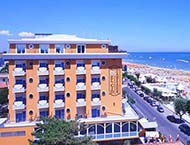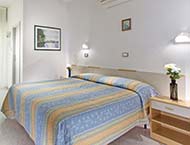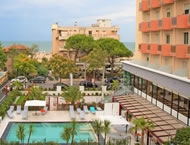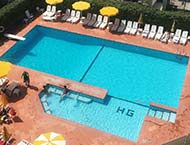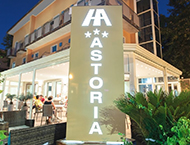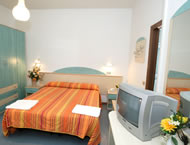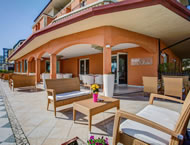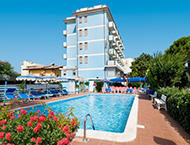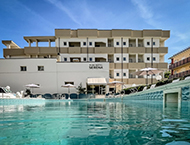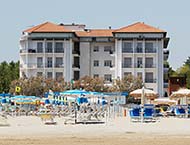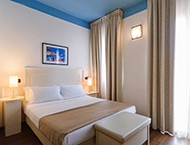HOTEL PREFERITI
LOCALITÀ DELLA RIVIERA ROMAGNOLA
RICHIEDI UN PREVENTIVO
-
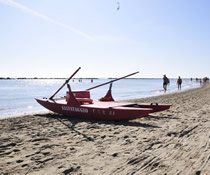
-
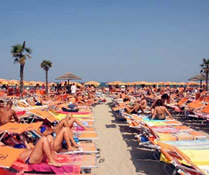
-
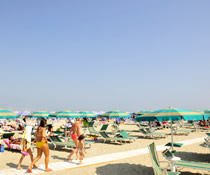 CERVIA 7
CERVIA 7 -
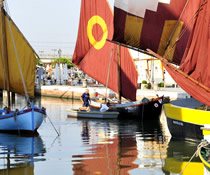 CESENATICO 10
CESENATICO 10 -

-
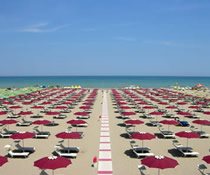 RIMINI 11
RIMINI 11 -
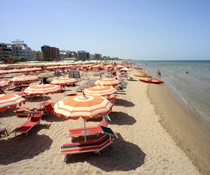 RICCIONE 4
RICCIONE 4 -
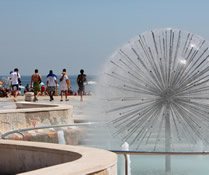
-
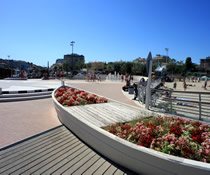
-
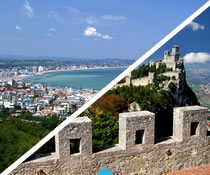
OFFERTE SPECIALI
HOTEL CONSIGLIATI
TROVA L'HOTEL IN BASE ALLE TUE ESIGENZE:
RICERCA OFFERTE
- 10AGOSTO
- 9GIUGNO
- 8LUGLIO
- 7SETTEMBRE
- 6FAMIGLIE
- 3VACANZE PER SPORTIVI
- 1MAGGIO
- 1SPIAGGIA
- 1BAMBINI
- 1GENITORI SINGLE
- 1PONTI PRIMAVERA
- 1ENTROTERRA ED ENOGASTRONOMIA
- 1FIERE
- 1RIMINI WELLNESS
ISCRIVITI ALLA NEWSLETTER
Riceverai offerte vacanza con sconti fino al 50%
Riceverai offerte vacanza con sconti fino al 50%
UNA VACANZA TRA MARE, STORIA E DIVERTIMENTO
La Romagna e la sua riviera.
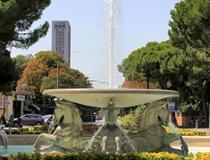 La Riviera Romagnola è un concentrato di risorse naturali, ricchezze storiche, tradizioni e cultura che forse non ha eguali in tutto lo stivale. Le sue coste sono da tempo il luogo privilegiato per le vacanze degli italiani, e non solo, che qui vedono nascere servizi sempre nuovi e ricevono attenzioni ed un tipo di accoglienza confidenziale che è difficile trovare altrove, il tutto senza spendere cifre da capogiro.
La Riviera Romagnola è un concentrato di risorse naturali, ricchezze storiche, tradizioni e cultura che forse non ha eguali in tutto lo stivale. Le sue coste sono da tempo il luogo privilegiato per le vacanze degli italiani, e non solo, che qui vedono nascere servizi sempre nuovi e ricevono attenzioni ed un tipo di accoglienza confidenziale che è difficile trovare altrove, il tutto senza spendere cifre da capogiro.
Il mare.
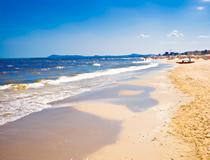 Il litorale della Riviera Romagnola si estende dai Lidi di Ravenna fino alle spiagge di Gabicce Mare, località che sconfina nelle Marche pur essendo geograficamente integrata nel territorio della Romagna. In questi 100 km di costa affacciati sul mare Adriatico si susseguono paesaggi e località diversi, che comprendono aree naturalistiche, pinete e lunghissimi arenili di sabbia fine. È proprio qui che nasce il mito della Riviera Romagnola che ancora oggi attrae e conquista un popolo di vacanzieri sempre numeroso.
Il litorale della Riviera Romagnola si estende dai Lidi di Ravenna fino alle spiagge di Gabicce Mare, località che sconfina nelle Marche pur essendo geograficamente integrata nel territorio della Romagna. In questi 100 km di costa affacciati sul mare Adriatico si susseguono paesaggi e località diversi, che comprendono aree naturalistiche, pinete e lunghissimi arenili di sabbia fine. È proprio qui che nasce il mito della Riviera Romagnola che ancora oggi attrae e conquista un popolo di vacanzieri sempre numeroso.
I parchi tematici.
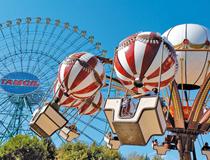 Numerosi, originali, divertenti ed anche istruttivi i parchi tematici della Riviera Romagnola sono tra i motivi principali per visitare il nostro territorio alla ricerca di emozioni indimenticabili. Da quelli più grandi con attrazioni per tutte le età come Mirabilandia, a quelli acquatici come Aquafan, fino a quelli più didattici come Oltremare e Italia in Miniatura, ce n’è davvero per tutti i gusti.
Numerosi, originali, divertenti ed anche istruttivi i parchi tematici della Riviera Romagnola sono tra i motivi principali per visitare il nostro territorio alla ricerca di emozioni indimenticabili. Da quelli più grandi con attrazioni per tutte le età come Mirabilandia, a quelli acquatici come Aquafan, fino a quelli più didattici come Oltremare e Italia in Miniatura, ce n’è davvero per tutti i gusti.
 La Riviera Romagnola è un concentrato di risorse naturali, ricchezze storiche, tradizioni e cultura che forse non ha eguali in tutto lo stivale. Le sue coste sono da tempo il luogo privilegiato per le vacanze degli italiani, e non solo, che qui vedono nascere servizi sempre nuovi e ricevono attenzioni ed un tipo di accoglienza confidenziale che è difficile trovare altrove, il tutto senza spendere cifre da capogiro.
La Riviera Romagnola è un concentrato di risorse naturali, ricchezze storiche, tradizioni e cultura che forse non ha eguali in tutto lo stivale. Le sue coste sono da tempo il luogo privilegiato per le vacanze degli italiani, e non solo, che qui vedono nascere servizi sempre nuovi e ricevono attenzioni ed un tipo di accoglienza confidenziale che è difficile trovare altrove, il tutto senza spendere cifre da capogiro.Il mare.
 Il litorale della Riviera Romagnola si estende dai Lidi di Ravenna fino alle spiagge di Gabicce Mare, località che sconfina nelle Marche pur essendo geograficamente integrata nel territorio della Romagna. In questi 100 km di costa affacciati sul mare Adriatico si susseguono paesaggi e località diversi, che comprendono aree naturalistiche, pinete e lunghissimi arenili di sabbia fine. È proprio qui che nasce il mito della Riviera Romagnola che ancora oggi attrae e conquista un popolo di vacanzieri sempre numeroso.
Il litorale della Riviera Romagnola si estende dai Lidi di Ravenna fino alle spiagge di Gabicce Mare, località che sconfina nelle Marche pur essendo geograficamente integrata nel territorio della Romagna. In questi 100 km di costa affacciati sul mare Adriatico si susseguono paesaggi e località diversi, che comprendono aree naturalistiche, pinete e lunghissimi arenili di sabbia fine. È proprio qui che nasce il mito della Riviera Romagnola che ancora oggi attrae e conquista un popolo di vacanzieri sempre numeroso.I parchi tematici.
 Numerosi, originali, divertenti ed anche istruttivi i parchi tematici della Riviera Romagnola sono tra i motivi principali per visitare il nostro territorio alla ricerca di emozioni indimenticabili. Da quelli più grandi con attrazioni per tutte le età come Mirabilandia, a quelli acquatici come Aquafan, fino a quelli più didattici come Oltremare e Italia in Miniatura, ce n’è davvero per tutti i gusti.
Numerosi, originali, divertenti ed anche istruttivi i parchi tematici della Riviera Romagnola sono tra i motivi principali per visitare il nostro territorio alla ricerca di emozioni indimenticabili. Da quelli più grandi con attrazioni per tutte le età come Mirabilandia, a quelli acquatici come Aquafan, fino a quelli più didattici come Oltremare e Italia in Miniatura, ce n’è davvero per tutti i gusti.L’enogastronomia.
 Tra i tanti elementi che hanno contribuito a rendere nota la Romagna e che ne caratterizzano in modo particolare l’identità ci sono sicuramente le sue tradizioni enogastronomiche, conosciute ed apprezzate da tempi lontani e meritevoli di un viaggio in queste terre.Il piatto tipico romagnolo per eccellenza è la Piada o Piadina. Il Sangiovese, il Trebbiano e l’Albana sono le specialità da non perdere per gli amanti dell’enologia.
Tra i tanti elementi che hanno contribuito a rendere nota la Romagna e che ne caratterizzano in modo particolare l’identità ci sono sicuramente le sue tradizioni enogastronomiche, conosciute ed apprezzate da tempi lontani e meritevoli di un viaggio in queste terre.Il piatto tipico romagnolo per eccellenza è la Piada o Piadina. Il Sangiovese, il Trebbiano e l’Albana sono le specialità da non perdere per gli amanti dell’enologia.
La cultura.
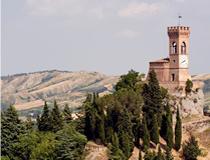 Tra i piccoli e grandi centri della riviera di Romagna si trovano numerose e consistenti tracce di epoca etrusca, romana e medievale. Nelle antiche mura, nei castelli, nei borghi arroccati sulle colline e nei centri storici di città come Ravenna, Rimini, Cesena è possibile trovare testimonianze di civiltà e popoli che hanno contribuito a rendere la Romagna un luogo di grande fascino, ricco di tradizioni millenarie e leggende.
Tra i piccoli e grandi centri della riviera di Romagna si trovano numerose e consistenti tracce di epoca etrusca, romana e medievale. Nelle antiche mura, nei castelli, nei borghi arroccati sulle colline e nei centri storici di città come Ravenna, Rimini, Cesena è possibile trovare testimonianze di civiltà e popoli che hanno contribuito a rendere la Romagna un luogo di grande fascino, ricco di tradizioni millenarie e leggende.
La ricettività.
 Se c’è qualcosa in cui la Romagna davvero eccelle è l’offerta turistica, declinata in una miriade di soluzioni tra hotel di tutte le categorie e gli stili, dai 5 stelle moderni alle residenze storiche, dalle pensioni economiche e a conduzione famigliare ai residence/ appartamenti completamente autonomi. La scelta è davvero ampia ed è difficile non trovare ciò che si desidera.
Se c’è qualcosa in cui la Romagna davvero eccelle è l’offerta turistica, declinata in una miriade di soluzioni tra hotel di tutte le categorie e gli stili, dai 5 stelle moderni alle residenze storiche, dalle pensioni economiche e a conduzione famigliare ai residence/ appartamenti completamente autonomi. La scelta è davvero ampia ed è difficile non trovare ciò che si desidera.
 Tra i tanti elementi che hanno contribuito a rendere nota la Romagna e che ne caratterizzano in modo particolare l’identità ci sono sicuramente le sue tradizioni enogastronomiche, conosciute ed apprezzate da tempi lontani e meritevoli di un viaggio in queste terre.Il piatto tipico romagnolo per eccellenza è la Piada o Piadina. Il Sangiovese, il Trebbiano e l’Albana sono le specialità da non perdere per gli amanti dell’enologia.
Tra i tanti elementi che hanno contribuito a rendere nota la Romagna e che ne caratterizzano in modo particolare l’identità ci sono sicuramente le sue tradizioni enogastronomiche, conosciute ed apprezzate da tempi lontani e meritevoli di un viaggio in queste terre.Il piatto tipico romagnolo per eccellenza è la Piada o Piadina. Il Sangiovese, il Trebbiano e l’Albana sono le specialità da non perdere per gli amanti dell’enologia.La cultura.
 Tra i piccoli e grandi centri della riviera di Romagna si trovano numerose e consistenti tracce di epoca etrusca, romana e medievale. Nelle antiche mura, nei castelli, nei borghi arroccati sulle colline e nei centri storici di città come Ravenna, Rimini, Cesena è possibile trovare testimonianze di civiltà e popoli che hanno contribuito a rendere la Romagna un luogo di grande fascino, ricco di tradizioni millenarie e leggende.
Tra i piccoli e grandi centri della riviera di Romagna si trovano numerose e consistenti tracce di epoca etrusca, romana e medievale. Nelle antiche mura, nei castelli, nei borghi arroccati sulle colline e nei centri storici di città come Ravenna, Rimini, Cesena è possibile trovare testimonianze di civiltà e popoli che hanno contribuito a rendere la Romagna un luogo di grande fascino, ricco di tradizioni millenarie e leggende. La ricettività.
 Se c’è qualcosa in cui la Romagna davvero eccelle è l’offerta turistica, declinata in una miriade di soluzioni tra hotel di tutte le categorie e gli stili, dai 5 stelle moderni alle residenze storiche, dalle pensioni economiche e a conduzione famigliare ai residence/ appartamenti completamente autonomi. La scelta è davvero ampia ed è difficile non trovare ciò che si desidera.
Se c’è qualcosa in cui la Romagna davvero eccelle è l’offerta turistica, declinata in una miriade di soluzioni tra hotel di tutte le categorie e gli stili, dai 5 stelle moderni alle residenze storiche, dalle pensioni economiche e a conduzione famigliare ai residence/ appartamenti completamente autonomi. La scelta è davvero ampia ed è difficile non trovare ciò che si desidera.























